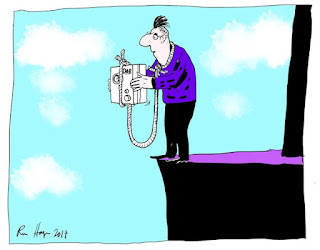Sirens and FM radio is the best solution in the event of a disaster
The flood disaster in Germany has put the finger on emergency alert systems (EAS). While the digital radio platforms as DAB and online as well as mobile networks went out of service FM radio most of the time stayed on. In German media now there is a debate on the importance of a robust broadcasting system. The new digital might not be better than proven analogue platforms. FM radio programs reach 74.7 percent of the German-speaking population aged 14 and over per working day (Monday-Friday). Online audio has a daily reach of 11.4 percent (8.0 million) ahead of DAB+ with 9.8 percent (6.9 million). And a great major part of all cars, buses and trucks on the road are not equipped with DAB+ (This includes most foreign registered vehicles).
While FM has become the world standard and there is no country on earth where you can only receive noise in the analog band, the digital terrestrial radio DAB+ will only play a role in selected regions. Even in Europe there is a patchwork quilt, according to German online publication teltarif.de.
The flood disaster in parts of North Rhine-Westphalia and Rhineland-Palatinate shows that, as an industrialized country, crises of considerable proportions can reach us at any time and unexpectedly. In such a case, the (timely) alerting and the short-term information of the population are of elementary importance, writes Michael Radomski CEO of the UPLINK Group in Radioszene.
Technical infrastructure - and in particular telecommunications - is always particularly vulnerable in the event of a disaster, regardless of whether it is caused by weather, earthquakes, accidents or terrorism and war. The partial failure of the Internet and the mobile phone networks in the regions affected by the flood clearly shows this. In far-reaching crisis scenarios, the public supply of (mobile) voice and data access is particularly quickly interrupted or overloaded.
Alerting the population with sirens, as was ensured in the past and has been increasingly expanded again for some time, is the simplest and most far-reaching solution there is. Simultaneously with this alert, the population can be informed in a targeted manner via various channels (radio, TV, Internet, warning app, SMS, etc.), whereby the FM radio distribution channel has proven to be the least susceptible to interference in the current damage situation.
While in the areas affected by the flood the power supply, internet connections and cellular coverage were and in some cases still are severely impaired, the maintenance and restoration of FM broadcasting from private and public broadcasters was ensured comparatively quickly. The reason is the high area coverage from a few locations as well as the low complexity of the network, which enables a quick repair or replacement solution even in the event of severe damage. The existing equipment of the population with FM radios (partly battery-operated or independent of the power supply in the car) makes it easier to reach people in crisis areas even in the event of natural disaster.
 |
| Picture: VG Oslo |
In Switzerland according to an internal audit report of the Defense Department (DDPS), significant flaws with the emergency informatio system were found. One point of criticism: In an emergency, information should be provided via FM . This technology will be replaced by the new digital DAB system by 2023. This has one major disadvantage: With DAB, you can no longer reach the private shelters and public protective systems or cellars that are underground. In the event of an emergency, a contract between DDPS and the telecom authority Swisscom ensures that the population can be informed via FM until 2027. There is still no solution for the time after that.
A proposal to replace FM with DAB in Sweden was rejected by the government and the Parliament 2015. One of many reasons was that the well EAS established FM network was modern and robust. The culture minister also pointed to concerns from the Swedish defense, which uses some of the DAB frequencies, and that there were also reports that the planned DAB networks would not have the same coverage area as the current FM networks.
Read more:
DAB+ in Europa: Auch im Jahr 2021 noch Flickenteppich. (Teltarif)
So mangelhaft ist unser Warn-System im Ernstfall (Blick)
Also read:
FM Radio Switch-Off Problems for Swiss Emergency Information
Deteriorating Emergency Radio in Norway After DAB Transition
FM Radio a Global Standard Mobile Emergency Utility
Final Stop For DAB Radio in Sweden
